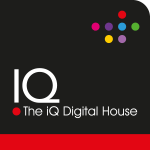Digital Publishing and Content Creation Services from iQ Digital House
Digital Publishing involves the creation and distribution of content online. Most of us encounter it in the form of online newspapers, magazines, journals, blog articles, downloadable PDFs, and eBooks. It is one of the fastest-growing forms of communication across the world, particularly when it comes to sharing information and knowledge. The creation of digital content became part of iQ Digital House’s service offering in 2014. It has become increasingly important for our commercial clients over the last 10 years. In this article, we offer an insight into some of the ways it can be used.
In our graphic design and print world, digital publishing provides the means for our customers and clients to communicate with their audiences in a new way; sometimes to replace printed material, sometimes to complement it.
One of the most important factors in the creation of digital content is the quality of the designed piece of work. This can often be a key differentiator when it comes to grabbing the audiences’ attention, meeting their expectations when they read the content, and encouraging them to share that content. That professional design touch makes all the difference, which is why we developed this aspect of our work.
Print and digital publishing compared
Printed collateral has that tangible element to it so it can be touched and read, while digital media simply appears on screens or online. Peoples’ preference and reaction to both can be generationally led and quite divisive – think Kindle versus printed books and you’ll probably appreciate how and why different people react in different ways.

Touch screen v feel the page can be a very personal choice
The information available through both sources can be exactly the same, e.g. newsletters, brochures, eBooks, or even flyers. But the main differences involve how and where you can view them, together with the immediacy of accessing the content; most people can access digital content more quickly using a mobile device and view it pretty much anywhere in the world, so long as they have a connected device (PC or mobile) and there’s an internet connection nearby.

You can view digital content anywhere, anytime
Benefits of utilising digital content and publishing
At a practical level, digital publishing provides a cost-effective way to update content and correct errors or mistakes. Amendments are effective immediately after the content has been refreshed online, which can be extremely useful if your business is constantly updating an item such as a product brochure, technical manual, user guide, or even a college prospectus.

Digital content can be updated quickly so it’s always current
At a distribution and awareness level, digitally available content can reach a bigger audience, and achieve that more quickly. For instance, if a car manufacturer is launching a new vehicle, they can complete a worldwide launch on the same day without the challenging logistical requirements of having to print brochures in different languages and distributing them to their global network of dealerships. And, if they have an existing customer and prospect database, they can even email the new vehicle’s details to customers at the same time as it’s launched to showrooms.
Digital content and publishing also offers enhanced levels of audience engagement. So, if we use the car launch scenario again, the digital brochure might include links to online videos showcasing the new vehicle, alongside specifications and pricing details for each model (which could be specific to each country, each territory, and even, each dealership), with links to buy the vehicle online straightaway.
Other ways to use digital publishing
Digital publishing enables businesses, organisations, and individuals to digitise documents and information so people can view the content online and then download or print it straight away (consider how many times you’ve downloaded menus for your favourite restaurants).
It also lends itself to being used collaboratively, for example, to enable a group of people to edit and produce a specific report, White Papers, or similar material.
What can iQ Digital House produce?
A significant percentage of our business involves clients in the Education, Learning & Development, Training, Manufacturing, and Engineering sectors. As a result, we have developed digital versions of the types of printed collateral that clients also use in these fields, including:
- Prospectuses
- Course Details
- Course Timetables
- eBooks
- City/Town Guides
- Club & Society Guides
- Campus Guides
- City/Town Guides
- Training Manuals
- Course Notes
- User Guides
- Instruction Manuals
- Product Brochures
- Parts Manuals
- Handbooks
- Service Logbooks
- Operator Guides
- Health & Safety Information
- Product Specifications
- Newsletters
- Catalogues
- Infographics
- Leaflets
- White Papers
The same types of digital collateral are used by many of our other clients across different industries. We also design branded digital versions of articles, forms, and documents for companies to distribute to their clients/customers, or for use within their own organisations (e.g. via internal Intranet services).
Dean Larkham, Production Director at IQ Digital House comments: “iQ Digital House has invested in many new technologies as they have emerged. We started to offer digital content and publishing services when commercial clients expressed an interest in combining this with their printed collateral. That was 10 years ago and we have seen this aspect of our business grow year-on-year. Digitally published and traditionally printed material have their own audiences. Our clients understand and appreciate that, so our work focuses on producing high quality output, designed to deliver what their audiences need to see.”
To find out more about iQ Digital House’s digital content and publishing services, please, please contact our Production Director, Dean Larkham, on 01252 319691, or email [email protected].
Published April 2024
Categories: Digital Publishing, Digital Content, Digital Marketing





